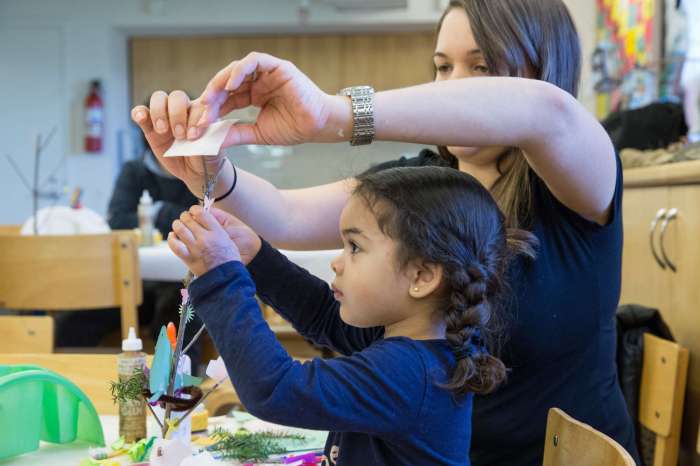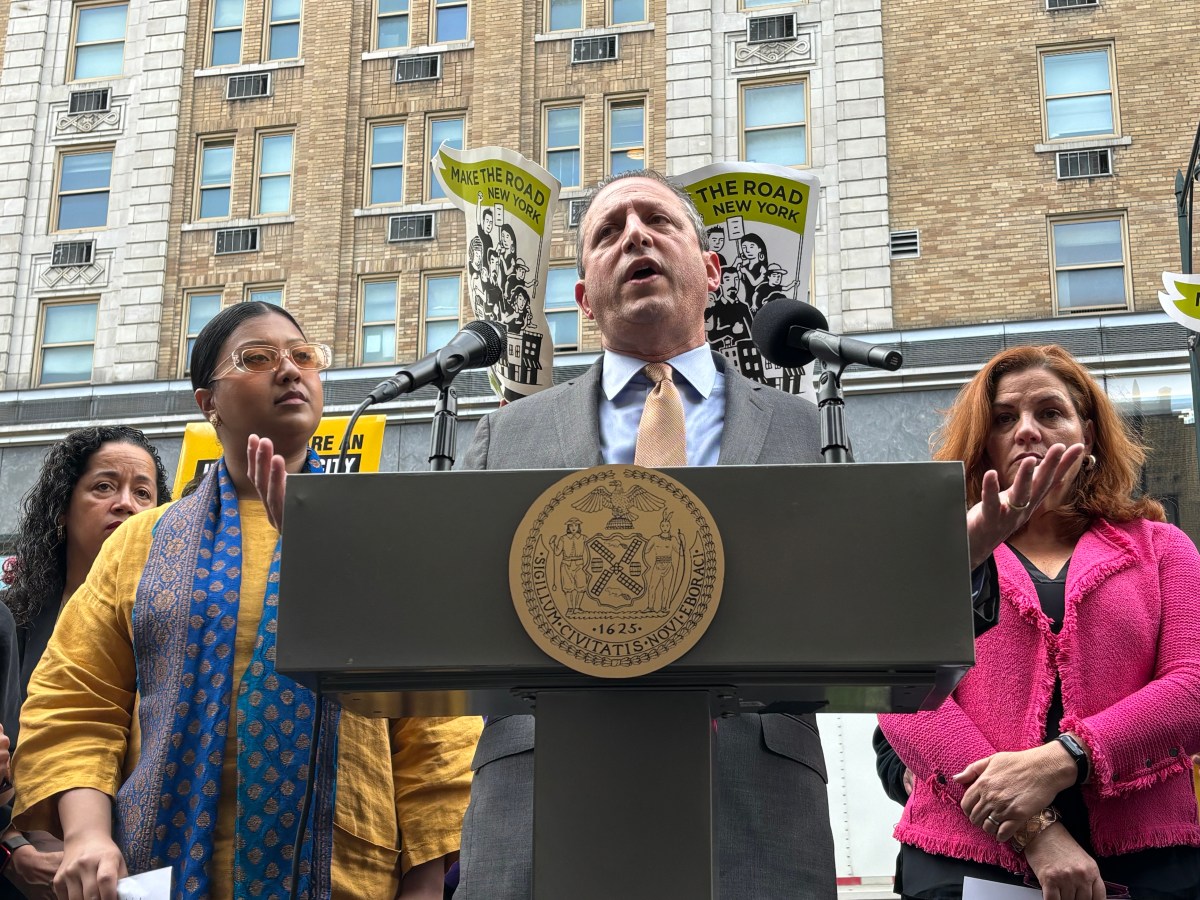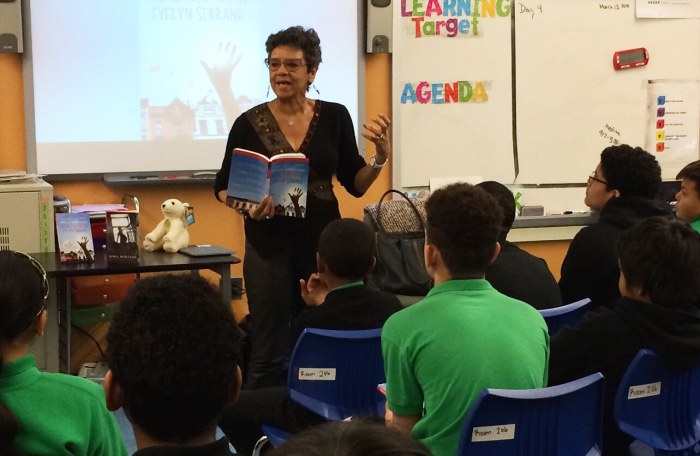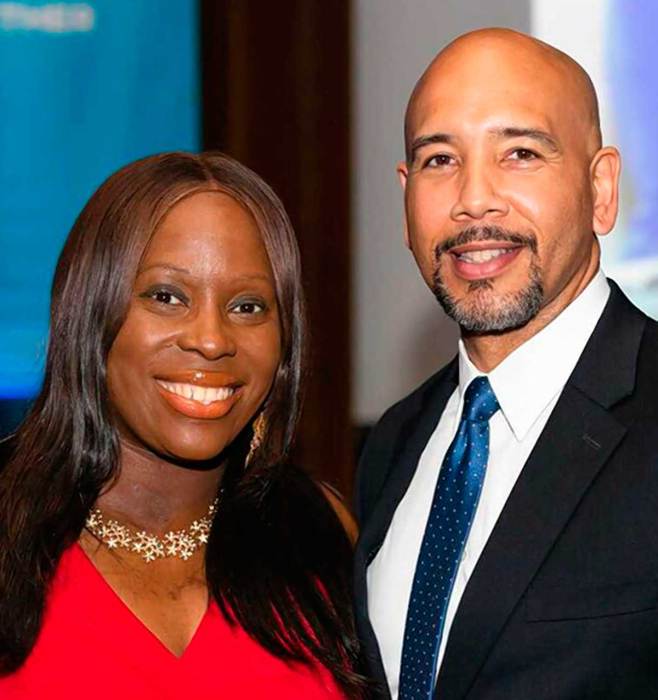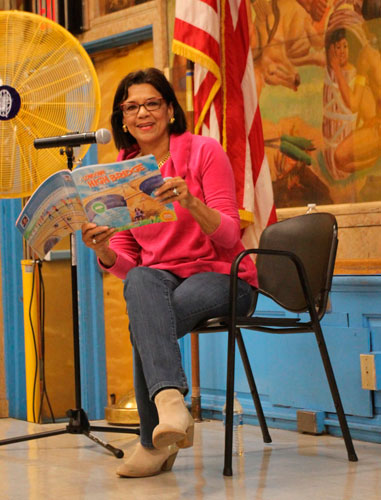In the tumult of early childhood in the 1950s South Bronx, Sonia Manzano turned to television as a viewfinder into a wealth of different experiences and customs. Some days it was “Gunsmoke,” a rowdy Western melodrama, and other days, the mundanity of suburban life in “Father Knows Best.”
Both concepts were far removed from the urban soundscapes of her everyday life.
From the moment Manzano made her first on-screen appearance as “Maria” on the long-running “Sesame Street” program in 1971 — breaking ground as one of the first Latina actors on national television — to the creation of her own show “Alma’s Way,” which chronicles the life of a 6-year-old Puerto Rican girl living in the Bronx, Manzano has been a constant force in children’s entertainment.
Manzano’s trailblazing contributions in the children’s entertainment landscape will be honored by Shine Global — an Academy and Emmy Award-winning nonprofit media company — where she will receive the Titan Award at the Children’s Resilience in Film Awards in Los Angeles on Oct. 20.
After 30 years on “Sesame Street,” Manzano’s shelves are filled with gold — 15 Emmy Awards for writing and a 2016 Lifetime Achievement Daytime Emmy Award — but her desire to entertain and educate a new generation of children through storytelling has only intensified.
“I remembered how much television I watched as a kid and used it as a source of comfort and all the information and misinformation that I got from it,” said Manzano. “When I joined ‘Sesame Street’ it was a coming of age during the Civil Rights Movement and this feeling of we’re going to change the world was quite exciting. When I got on ‘Sesame Street’ (as Maria), I kind of became what I needed to see myself on television.”
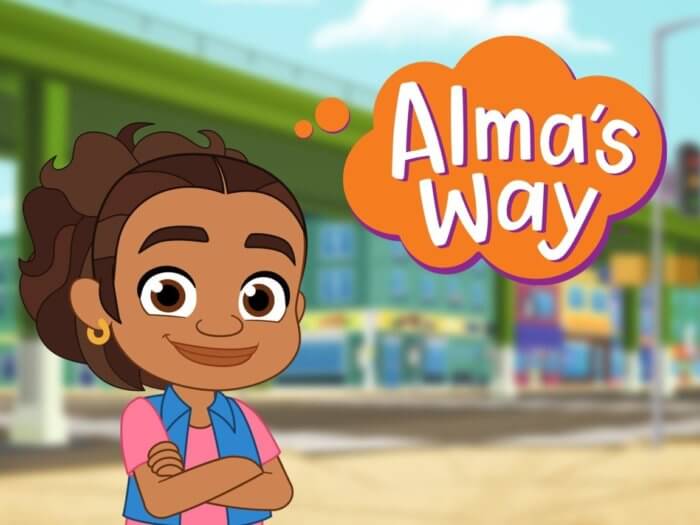
The world of children’s media is slightly more diverse than adult content, but it too is still not representative of its target audience where roughly half of all children are non-white. In 1969, Sesame Street’s fundamental goal was to reduce the educational deficits experienced by disadvantaged youth based on differences in their preschool environment.
According to psychologyinaction.org, a scientific website written by UCLA psychology graduate students, if young kids are exposed only to the representation of majority identities such as white males, children who do not fit into the category can feel “othered,” unimportant and invisible. More than that, they can strive toward unattainable expectations and become disappointed when they realize they do not “fit” into common media portrayals.
For “Alma’s Way,” which is set for its second season in 2023, Manzano wanted a show that centered on a real setting that she knew fondly, the South Bronx.
When children see positive examples of people like themselves, it promotes a positive racial and ethnic identity, increases self-esteem, fosters resiliency and perhaps even improves economic outcomes, a 2020 Princeton Brookings study found.
“In underserved areas, children are tested a lot and they had to pass a lot of tests and had to memorize and they were, we expect a lot from them younger and younger than we’re used to,” said Manzano. “There’s a lot of pressure on these kids to do well, and I thought how these underserved kids are thinking that if they don’t do these things, that they’re stupid, that they can’t (do it).”
The Oct. 20 event is also shining a light on the maturation of content in children’s media. “Scenes From the Glittering World” is a PBS film that covers adolescence, trauma and the power of connecting with an isolated Navajo homeland, and a Scandinavian film “Gabi: Between Ages 8 and 13” tackles gender identity.
Programs like “Sesame Street,” despite its colorful, anthropomorphic puppets, never shied away from tackling complex issues for its young viewers. On Manzano’s seventh season on the show, “Sesame Street” audiences had to grapple with the real-life death of the beloved Mr. Hooper — played by Will Lee who passed away in 1983 — and the acclaimed “Goodbye, Mr. Hooper” episode tackled death in a memorable way.
“When Mr. Hooper died, (Sesame Street writers) researched what kids’ thoughts about death were and they had thoughts like, ‘who’s gonna help me with my homework? Who’s gonna make my chocolate milk? Who’s gonna take me to school?’ You know, ‘why can’t this person come back?,'” Manzano said. “We never tried to shy away from the realities of life. But we also wanted to take a complex thing, break it down and … somehow make it entertaining as a television show.”
Shine Global, in its own right, is provoking its younger audience, often middle to high school students, with thought-provoking documentaries often exploring the stories of marginalized voices and cultures such as one chronicling the child of a DACA parent who’s threatened with deportation or their most recent venture “Inocente.”
“Some of the topics that we address in our films are very serious and sometimes very violent, but we take tough topics with the emphasis of hope and resilience, so it’s palatable for kids,” said Susan MacLaury, executive director of Shine Global. “I think our documentaries naturally raise any number of questions for discussions. In our screenings, we’d have viewers find themselves relating to these stories.”
Reach Robbie Sequeira at rsequeira@schnepsmedia.com or (718) 260-4599. For more coverage, follow us on Twitter, Facebook and Instagram @bronxtimes








